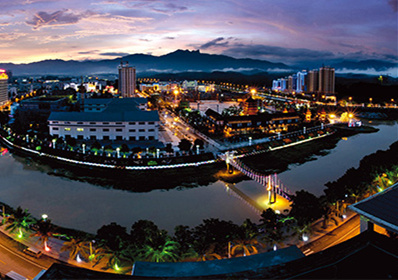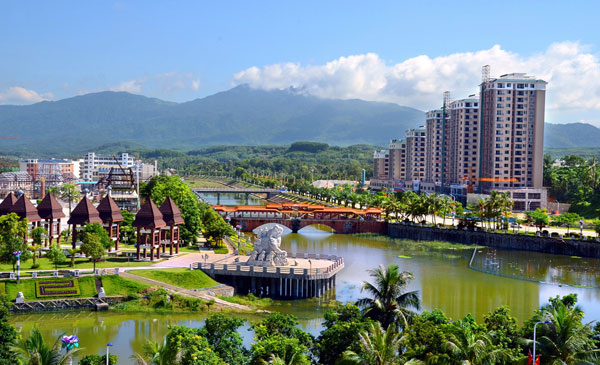
The night view of Baoting. [Photo/baoting.hainan.gov.cn]
Baoting Li and Miao autonomous county is situated at the north face of Wuzhi mountain and connects Sanya from the south and Wuzhi mountain city from the north. The county covers an area of 1153.24 square kilometers, accounting for 3.4 percent of Hainan province's land area. Li and Miao ethnic groups are the long-dwelling people in Baoting county.

Qixian Square. [Photo/baoting.hainan.gov.cn]
Baoting county is rich in natural and tourism resources. With 85.2 percent of forest coverage rate, the county is a vital base in China for the plantation of Chinese traditional medicine. It not only has tropical rainforest but also has natural hot spring. What's more, the county also owns a 23 km long karst cave -- Xianlong karst cave and the largest tropical Karst landform -- Xian'an stone forest.
The county is rated as an excellent national model in terms of the efforts invested in providing the health services and the progress made in shaping the modern city.
It is famous for its cultural heritage such as drilling wood for fire, the traditional brocade of Li ethnic group, making cloth from tree bark and traditional bamboo musical instruments of Li ethnic group, which have all been added to the UNESCO List of Intangible Cultural Heritage. As a prefecture with many ethnic groups, Baoting is also known for Chinese folk art and serves as a platform of cultural exchange on both sides of the Strait.
Popular tourist attractions in the prefecture are the Yanoda Rainforest Cultural Tourism Zone, the Binlang Valley Cultural Tourism Zone, the Qixianling Hot Spring and National Forest Park.
In 2022, the county's GDP was 6.9 billion yuan ($1 billion), increasing 4.5 percent.